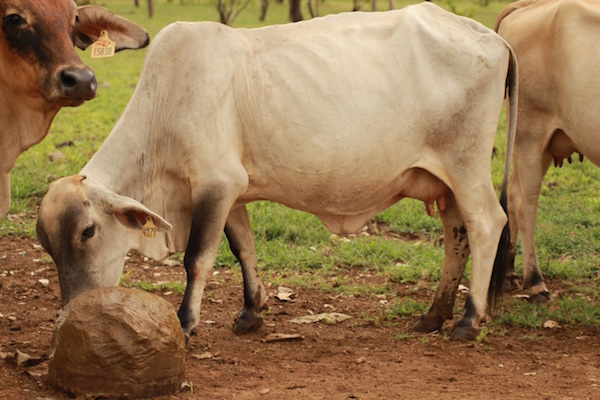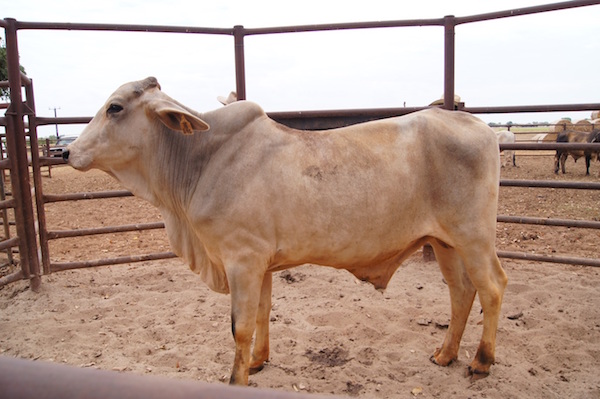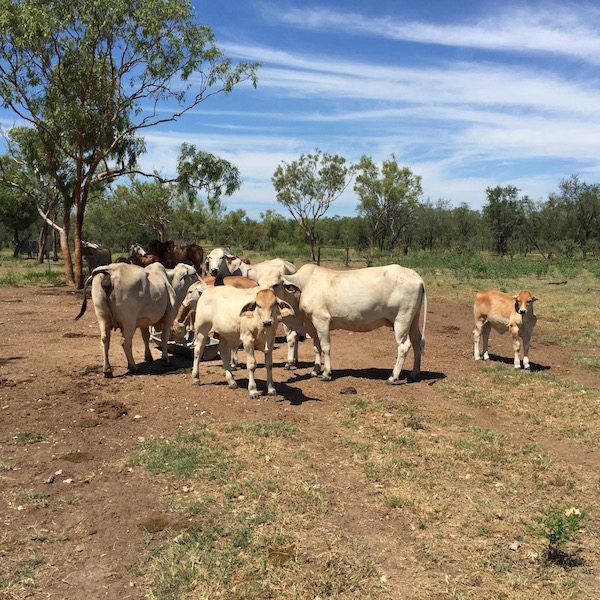My favourite cows
Host: Katherine Research Station
Written by Whitney Dollemore – Northern Territory Department of Primary Industry and Fisheries, Katherine Research Station.
What is there I can possibly say that isn’t already known . . . well nothing. I am going to say what many a more knowledgeable person has said before me . . . the best cow is one that gets pregnant as a heifer and manages to year after year contribute a weaner to the operation. That is, a heifer that manages to conceive early at her first mating, re-conceives whilst lactating with her first calf and maintaining reasonable body condition and manages to keep re-conceiving whilst lactating for her productive lifetime. I hear a few nay-sayers in the audience . . . “that is a tall order and isn’t achievable”.
I would have to agree with them on their first point, it is a very tall order and so nutrition needs to be considered as important in order to set this heifer up so that she can grow sufficiently prior to mating, and can grow, lactate, and reconceive. No female could be expected to achieve this without some nutritional assistance. However, I have to disagree with the second point. This is entirely possible. Here is a photo of a cow that was 17 years old and has contributed 15 weaners to the Northern Territory Department of Primary Industry and Fisheries’ (NT DPIF) Selected Brahman herd in her lifetime. That is a weaner every year since she was two years old . . . amazing right! This is why she is one of my favourite cows. If I had a whole herd of cows like her surely I would be a happy woman.
 The Favourite!
The Favourite!
Not only has she brought in 15 weaners, the average weaning weight of these weaners has been 173kg, is that not a great cow? Have a look at her 2013 weaner who has grown out to be not a bad looking “teenager” bull at just under 2 years of age.

This cow is from the Selected Brahman program. The original aim of the Selected Brahmans was to investigate the gains in productivity that can be made through selection for fertility in a Brahman herd. NT DPIF has a Brahman herd that has been selected for fertility traits alone since 1994. Selection has involved both sire and dam selection based on the following criteria:
Female:
- Raised two weaners by the age of four and pregnant
- Raise a weaner every year – pregnant wet first round each year
Male:
- High 400 day weight
- Large scrotal circumference
- Percent normal sperm at 12 months
- Dam with early puberty and ability to reconceive after first calf
- Polledness
As you can see this cow certainly does fit the bill for selection. The Selected Brahman herd has been monitored through the Brahman Breedplan with all animals back to 1986 being added.
So, how does it compare with the average of the registered Brahmans in Australia?
The herd performance in relation to the breed average for Brahmans can be seen in the graphs below showing very large gains in scrotal circumference, lower days to calving (faster rebreeding) without a divergence in 600 day weight.

What does the future hold?
Heifer fertility, particularly onset of puberty holds a key to the lifetime production of breeders. A number of studies have now shown that a lower heifer age at puberty is associated with improved fertility at later ages. The Beef Cooperative Research Centre found average age at puberty for Brahman heifers = 750 days. Obviously this late average age at puberty is not conducive to good pregnancy rates from yearling mating. As the Selected Brahman heifers are earlier maturing than commercial heifers, the NT DPIF are involved in a collaborative project with Queensland Department of Agriculture and Fisheries, Queensland Alliance for Agriculture and Food Innovation and Agricultural Business Research Institute investigating onset of puberty and other fertility traits. The work uses a combination of strategic phenotypic recording and genotyping to rapidly increase the accuracy of genetically describing fertility traits (Estimated Breeding Values). This will enable the rate of genetic progress through selection to be increased.
Selected Brahman heifers are being monitored for onset of puberty using ovarian scanning and pregnancy diagnosis to record age and weight at puberty (date of first corpus luteum or conception). These animals will then be monitored following a successful calving for the resumption of cycling in order to measure the length of post-partum anoestrus (no cycling during lactation) and their ability to get back in calf within four months of calving.
Of course, the breeders are always carrying on contributing a weaner each year. The average wet pregnancy rate for these cows over the last 10 years is 83%, not too bad for breeders running on native pasture with only a basic dry and wet season mineral supplementation regime.
What do you think . . . would these be your favourite cows too?

